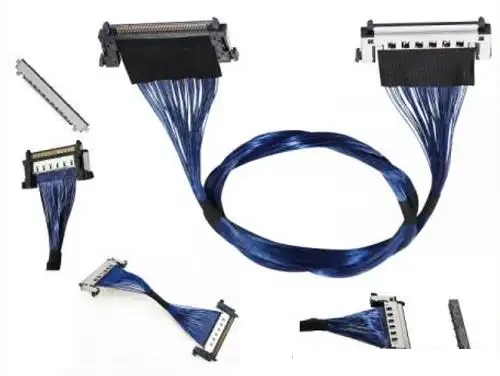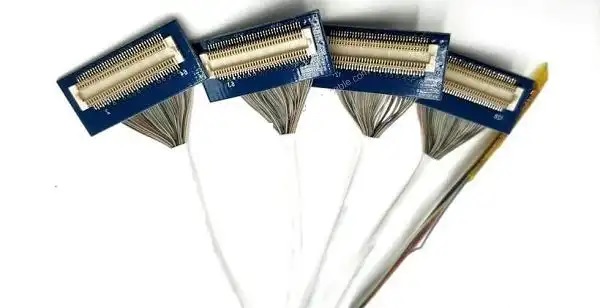Categorization:Harness Component
In modern high-precision electronic equipment, signal transmission cables play a crucial role. Although common coaxial cables, HDMI, Type-C, and others are widely used in consumer electronics, in small and high-density products such as mobile phones, laptops, drones, and medical equipment, extremely thin coaxial cables (Micro Coaxial Cable) are an indispensable invisible "leading role". This kind of cable is slender, flexible, and has strong anti-interference ability, but are you curious about how far it can transmit? This article will delve into the transmission characteristics, length control points, and reference distances in actual applications of extremely thin coaxial cables.
Why control the length of extremely fine coaxial beam?
Extremely fine coaxial cables, due to their extremely small diameter (generally between 0.2mm and 1.0mm), high flexibility, and strong anti-interference capability, are widely used inside high-density equipment. However, compared to ordinary coaxial cables, they are extremely sensitive to length:
Signal attenuation: The longer the cable, the greater the signal loss, which is particularly evident in high-frequency digital signals.
Signal delay inconsistency: The different lengths of multiple harnesses can lead to different arrival times of high-speed signals, forming "timing skew."
• Interference resistance decline: The long wiring increases the risk of electromagnetic interference, especially when multiple groups of signal lines are arranged in parallel.
Therefore, strictly controlling the length of extremely thin coaxial cables in the product design and wiring process is the key to ensuring signal integrity and system stability.
The characteristics of signal transmission through ultra-fine coaxial lines
Micro Coaxial Cable has the following advantages compared to ordinary coaxial cable:
Extremely small volume: suitable for wiring in narrow spaces.
Good high-frequency transmission performance: stable transmission of high-definition video and digital signals.
Strong anti-interference capability: Can maintain signal stability in complex electromagnetic environments.
High flexibility: Resists repeated bending, convenient for wiring inside miniature devices.
However, due to the small cross-sectional area of the conductor and relatively high resistance, its transmission distance is shorter than that of a standard coaxial cable, especially in high-speed digital signal applications, where signal attenuation is more obvious.
Three, the actual transmission distance of ultra-fine coaxial lines
The transmission distance is affected by various factors:
Cable specifications: Different outer diameters (0.2mm, 0.3mm, 0.5mm) and internal structures (single strand, stranded, shielding layer type) will affect the transmission capability.
• Signal Frequency: The higher the frequency, the faster the attenuation. Low-frequency signals (audio, analog signals) can transmit several meters; high-frequency signals (high-definition video signals) are generally 0.5~3 meters.
Signal Type: Digital signals have high requirements for integrity and have relatively short transmission distances; analog signals can tolerate slight attenuation and have slightly longer distances.
Transmission speed: The higher the speed, the stricter the requirements for cable integrity, and the shorter the distance.
• Environmental interference: The effective transmission distance will also be reduced when complex electromagnetic environment or dense layout occurs.
Micro coaxial cable performs very well in short-distance high-speed data transmission, especially suitable for high-definition displays, laptops, and high-density wiring inside drones. If long-distance transmission is required, it is recommended to use ordinary coaxial cable, fiber optic cable, or high-speed differential line as an alternative.
Extremely thin coaxial cables occupy an important position in miniature high-precision equipment due to their compactness, flexibility, and high-frequency performance. However, they are extremely sensitive to length, and the length of the cable bundle must be strictly controlled during design and wiring to ensure signal integrity and anti-interference capability. When selecting wire materials, comprehensive consideration should be given to the application environment, signal type, transmission rate, and wiring length: for short-distance high-speed transmission, extremely thin coaxial cables are undoubtedly the first choice; for long distances or high-interference environments, it is necessary to consider more suitable solutions such as ordinary coaxial cables or optical fibers.
We have been focusing on the design and customization of high-speed signal cable harnesses and ultra-thin coaxial cable harnesses for a long time, committed to providing customers with stable and reliable high-speed interconnection solutions. If you have any related needs or want to learn more, please feel free to contact: Manager Zhang 18913228573 (WeChat number).